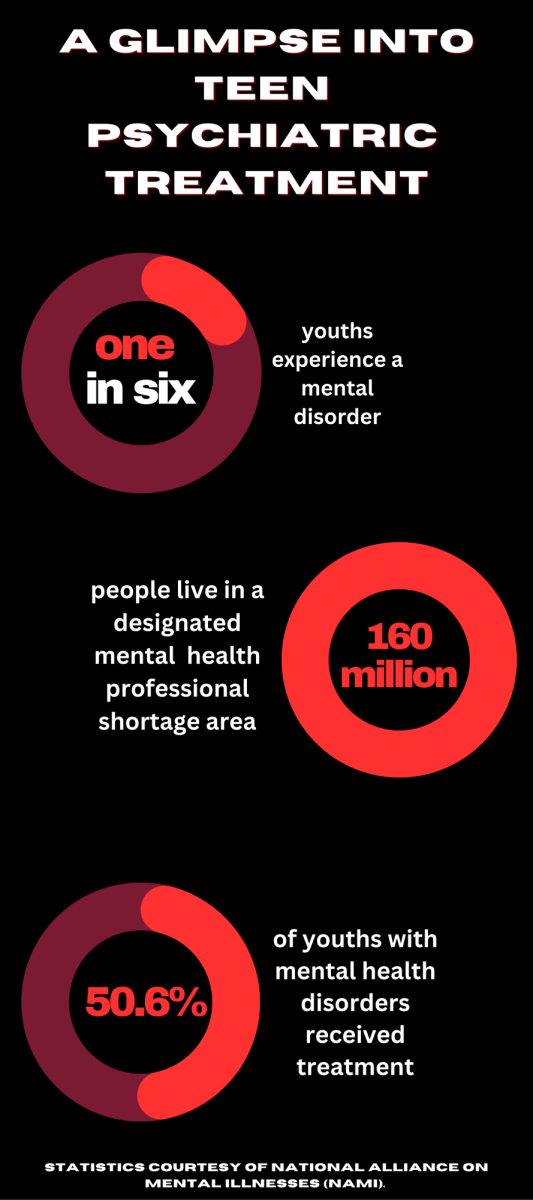What are they thinking right now? Are they getting the help they need? Did I make the right decision? Lying awake at night, a thousand scenarios brew in parents’ minds. The possibility of their child being scared, angry, or worse is at the forefront of their thoughts.
For parents whose children are admitted to residential treatment facilities, the experience can feel like a whirlwind of uncertainty, hope, and disconnection. While programs exist to provide necessary care and treatment, deciding to send a child away — no matter how necessary it may be — can be an impossible choice.
Emmaus High School junior Morgan Schuler attended two residential treatment programs in 2020 and 2023, leaving her mother, Marie Schuler, to understand this conflict all too well. Marie Schuler described her first experience leaving Morgan at Lehigh Valley Teen Adolescent Area in Muhlenberg.
“It was emotional. Emotional and draining… but I knew in my heart that it wasn’t my fault, and by Friday [after treatment], she was hugging me and thanking me for following through,” Marie Schuler said.
Though parents understand treatment can be beneficial, many still hesitate to begin the process for their child due to negative connotations surrounding mental health care. Despite the growing awareness of mental illness, conversations about adolescent mental health still carry an unspoken weight.
“Parents don’t talk about it because they’re embarrassed, but I think the barrier to break [starting point for recovery] is to talk about it, and get it out there and don’t be ashamed,” Marie Schuler said. “My advice to parents is: you have to put it in prayer. You need to find the resources out there. You’ve got to be the advocate for yourself.”
Parents need to do extensive and careful research on treatment options for adolescents.
Danielle Walsh, an EHS Psychology teacher and former case manager for Cornell Abraxas — an agency that deals with adjudicated youth — helps place struggling adolescents in the appropriate treatment for them and fully understands the admissions process.
“I think sometimes parents just don’t know what else to do,” Walsh said. “I think they get to a point where they’re just throwing their hands up in the air, and they’re just like, ‘What do I do?’”
This feeling of helplessness can be common. Families often spend months or years exhausting every possible resource — therapy, medication, school interventions — only to find themselves at a dead end.
“Sometimes they need those facilities because it helps mitigate the emergency situation at that moment,” Walsh said. “For example, if a kid has a depressive episode and their suicidal ideation is happening and things like that, there has to be immediate help for that kid.”
Even when treatment is necessary, the separation from a child in their family can be agonizing. The fear of not knowing if the treatment will work, how their child is doing, and if they are safe are all prevalent worries.
Marie Schuler’s experience is not unique. Many parents may often struggle to navigate the complex system of residential mental health treatment especially when communication is limited and transparency is lacking.
“[My daughter] called me, and she said she felt that her safety was threatened. She needed to come out of there, and it was mortifying,” Marie Schuler said.
The panic set in when she desperately tried to reach the facility staff so she could speak to Morgan.
“I called multiple times. No one ever answered. And then I drove, which was an hour and 15 minutes, to pick her up. And when I got there, I couldn’t even see her,” Marie Schuler said.
Marie Schuler felt helpless. The lack of communication from the facility only heightened her fear. She did everything she could to reach her daughter, yet she was met with silence.
This exemplifies a common issue with residencies. Parents often find themselves without guidance or support while navigating the complexities of their child’s treatment.
“Parents need support too,” Walsh said. “It’s not easy to navigate some of the issues and problems that kids are having. Issues and problems run the gamut from mild to moderate to severe.”








